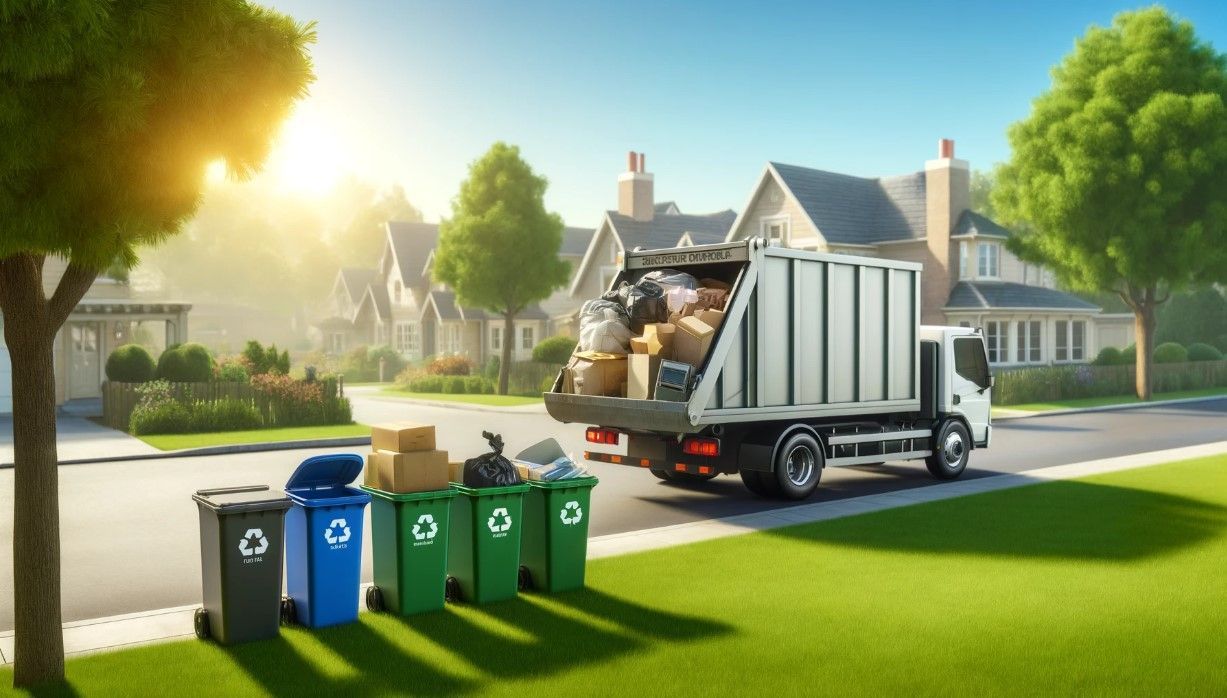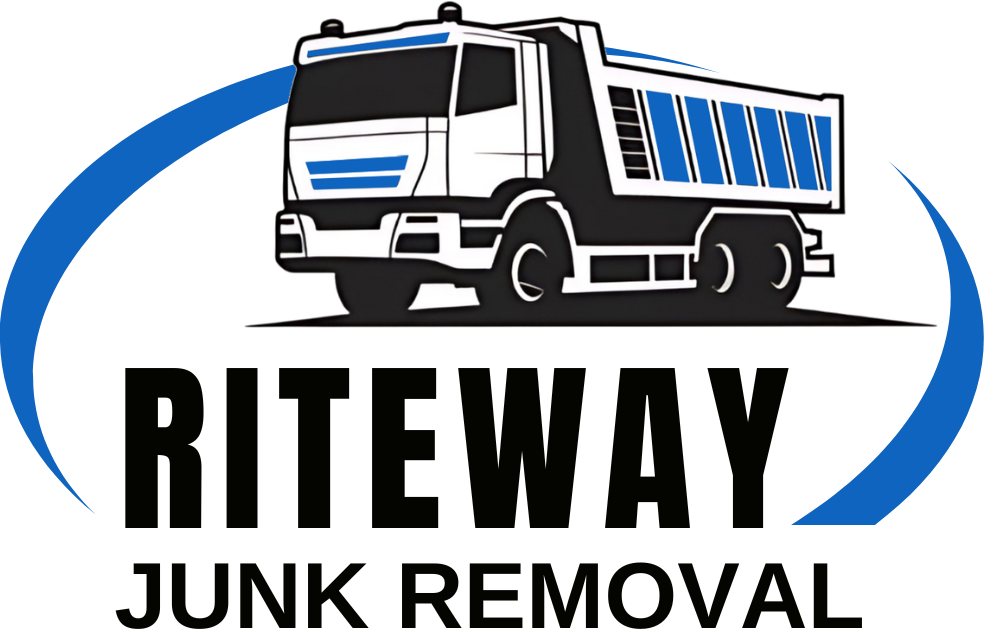Proudly Serving Elkhart, IN
ritewayservicesinc@gmail.com

Recycling Unwanted Items for a Cleaner, Greener Home
Ever feel like your home is bursting with stuff you no longer need? Old electronics, clothes that don’t fit, and
furniture you’ve replaced can pile up fast. But instead of letting these items go to waste, recycling them can be a smart solution. Recycling isn’t just good for the planet—it’s also a simple way to declutter your home. In this article, we'll explore how you can give unwanted items a new life through recycling and how it benefits your home and the environment.
Why Recycling Unwanted Items Matters
Recycling unwanted items isn’t just about getting rid of clutter. It’s about making a difference. Here’s why it matters:
- Reduces Landfill Waste: Items like electronics and appliances contain harmful materials that can leak into soil and water if left in landfills.
- Saves Natural Resources: Recycling materials like metals, plastics, and paper means fewer raw materials need to be mined or harvested.
- Cuts Energy Use: Making new products from recycled materials often takes less energy than producing from scratch.
By choosing to recycle, you’re not just clearing space in your home—you’re helping the environment in a big way.
Common Household Items You Can Recycle
It might surprise you how many things around your home can be recycled. Here’s a breakdown of common household items and how to recycle them:
| Item | How to Recycle | Special Tips |
|---|---|---|
| Electronics (E-Waste) | Drop off at local e-waste recycling centers or return to stores. | Remove personal data before recycling. |
| Old Clothing | Donate to thrift stores or recycle through textile programs. | Torn clothes can be repurposed as cleaning rags. |
| Furniture | Contact local charities or recycling centers for pickup. | Many centers refurbish furniture for reuse. |
| Batteries | Use designated drop-off bins at retailers or recycling events. | Avoid throwing in the trash—batteries can leak chemicals. |
| Plastic Containers | Clean and place in your curbside recycling bin. | Check your local recycling rules for accepted plastics. |
How to Properly Recycle Different Materials
Understanding the best way to recycle various materials can ensure they don’t end up in the wrong place. Here’s a closer look:
1. Recycling Electronics
- What to Do: Old phones, laptops, and TVs can be taken to designated e-waste recycling centers.
- Why It Matters: Electronics often contain lead, mercury, and other toxic materials that shouldn’t end up in landfills.
Pro Tip: Some manufacturers offer take-back programs, making it easy to return your old device for recycling.
2. Textiles and Clothes
- What to Do: Donate wearable items to local charities or thrift shops. Torn or stained items can go to textile recycling programs.
- Why It Matters: Textiles in landfills can take decades to decompose and release methane, a potent greenhouse gas.
Pro Tip: Some brands offer discounts when you bring in old clothing for recycling.
3. Old Furniture
- What to Do: Contact local recycling centers that accept large items or list them for free pickup.
- Why It Matters: Furniture recycling reduces the need for new materials like wood and plastic.
Pro Tip: Consider upcycling. With a fresh coat of paint, that old chair could have new life in another room.
4. Batteries and Hazardous Waste
- What to Do: Use recycling points at electronic stores or attend local hazardous waste collection events.
- Why It Matters: Batteries contain chemicals that can leak into the soil and water.
Pro Tip: Look for rechargeable options to reduce the number of batteries you use over time.
How to Get Started with Home Recycling
Recycling at home doesn’t need to be complicated. Here’s how you can get started:
- Create a Recycling Station: Designate bins for different materials like plastics, paper, and glass. This makes sorting easier.
- Know Your Local Rules: Each city has its own recycling guidelines. Visit your local waste management website for what can and can’t be recycled.
- Plan for E-Waste and Bulky Items: Set reminders for local recycling events where you can drop off electronics or larger items like old furniture.
- Encourage Family Participation: Make recycling a family activity. Teach kids what goes in each bin and why it’s important.
FAQs About Recycling Unwanted Items
Q: What items should not be put in the recycling bin?
A: Items like plastic bags, Styrofoam, and greasy pizza boxes should be kept out of regular recycling bins. Check your local guidelines for disposal methods.
Q: How do I recycle old appliances?
A: Many municipalities offer appliance recycling programs, or you can contact scrap metal companies. Some stores also take back old appliances when you purchase a new one.
Q: Can I recycle broken glass?
A: It depends on your local recycling program. Many do not accept broken glass in curbside bins due to safety concerns, but specialized glass recycling centers may accept it.
Environmental Benefits of Recycling Unwanted Items
When you recycle unwanted items, you contribute to a cleaner, healthier planet. Here’s how:
- Reduces Greenhouse Gas Emissions: Recycling helps reduce the carbon footprint of manufacturing by using less energy.
- Minimizes Pollution: Properly disposing of hazardous materials like batteries prevents soil and water pollution.
- Promotes a Circular Economy: Recycling keeps materials in use longer, reducing the need for new resources.
Encouraging Your Community to Recycle
Your impact goes beyond your home when you encourage others to join in. Here’s how to inspire your community to start recycling:
- Host a Recycling Event: Organize a local drive for e-waste or clothing donations.
- Share Recycling Tips on Social Media: Spread the word about recycling best practices.
- Partner with Local Businesses: Many businesses are happy to serve as drop-off points for recyclables.
Make Recycling a Habit
Recycling unwanted items is a simple but powerful way to protect the environment. By making a few changes at home, you can reduce waste, save resources, and create a cleaner, greener space for you and your family. Ready to start? Begin by setting up your own recycling station today, and see how easy it is to make a positive impact on the planet.
Got any recycling tips of your own? Share them in the comments below! Don’t forget to share this guide with your friends on social media to inspire them to start recycling too.
Contact us
If you have any questions or need any assistance after business hours, please get in touch.
ADDRESS
221 US Highway 20, Middlebury, Indiana 46540, United States
Phone
BUSINESS HOURS
- Mon - Sun
- -

We will get back to you as soon as possible.
Please try again later.
All Rights Reserved | Riteway Demolition
